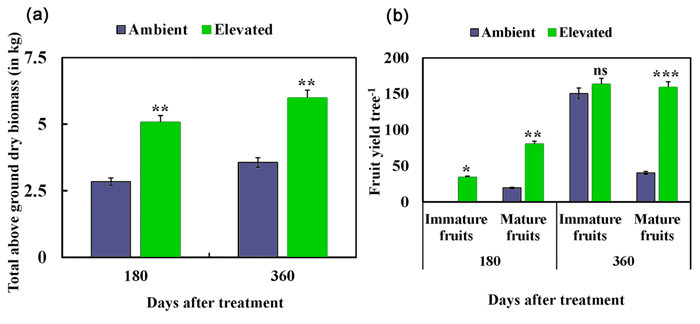| Tweet | Follow @co2science |
Paper Reviewed
Kumar, S., Sreeharsha, R.V., Mudalkar, S., Sarashetti, P.M. and Reddy, A.R. 2017. Molecular insights into photosynthesis and carbohydrate metabolism in Jatropha curcas grown under elevated CO2 using transcriptome sequencing and assembly. Scientific Reports 7: 11066, DOI:10.1038/s41598-017-11312-y.
Purging nut (Jatropha curcas) is a fast-growing perennial tree, prized for its high seed oil content, easy propagation and ability to adapt to a wide range of agro-climate conditions. It was also the subject of a recent analysis by Kumar et al. (2017), who reasoned that a better understanding of its response to the CO2 fertilization effect would assist growers of this plant species to better take advantage of future increases in the global concentration of atmospheric carbon dioxide. Thus, the team of five Indian scientists conducted an experiment in which they grew purging nut trees for one year (two fruiting seasons) under both ambient (395 ppm) and elevated (550 ppm) CO2 levels in an open-top chamber field study. Then, at various intervals during the study, they performed a series of measurements and analyses on the young trees, including next generation RNA-sequencing to better understand "complex transcriptional patterns and measurements of gene expression in different tissues or at different stages of plant development in response to varying external environments."
So what did their study reveal?
Under elevated CO2 conditions, Jatropha trees experienced an increase in net photosynthetic activity, growth and biomass production. At the end of both seasons (180 and 360 days after planting), for example, the above ground dry biomass of the plants was approximately 70 percent higher in the elevated CO2 treatment compared to ambient (see Figure 1a). Measurements of fruit yield, which the authors describe as their "most interesting observation," revealed an even greater CO2-induced enhancement -- a whopping 3-fold increase at the end of the first growth season and a respectable 1.5-fold increase at the end of the second (see Figure 1b).
On a molecular level, transcriptome sequencing and assembly and differential gene expression analysis revealed 3013 transcripts that were differentially regulated under elevated CO2. A majority of these transcripts was found to be related to processes associated with photosynthesis and carbohydrate metabolism; and their expression was designed "to modulate appropriate metabolic pathways in a coordinated manner to produce a coherent response towards sustaining enhanced photosynthesis in the elevated CO2 environment."
With respect to the significance of their findings, Kumar et al. say their observations "clearly [indicate] the efficiency of Jatropha to positively maintain better resource utilization towards sink development in the form of biomass and fruit yield under elevated CO2 environment irrespective of season." Moreover, they say that "Jatropha was able to escape photosynthetic downregulation in the later stages of growth due to availability of sufficient sinks like increased tertiary branches, flowers and fruits to sustain enhanced growth," which findings imply "efficient source-sink interaction and sustained photosynthetic potential of Jatropha under elevated CO2." And that is terrific news for the future of this tree species!

Figure 1. Above ground biomass (Panel A) and fruit yield per tree (Panel B) of Jatropha curcas after 180 and 360 days of growth. The data are expressed as mean ± SD (ns, not significant; *P < 0.05; **P < 0.01; ***P < 0.001). Adapted from Kumar et al. (2017).




